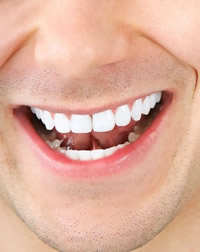By Robert Ander
 TMD, or temporomandibular joint disorders, are a serious problem affecting more and more people every year. If you’ve ever had problems with your jaw, pain from chewing, or biting, or even if you wake up with a sore jaw, you might suffer from TMD. Disorders of the jaw are often incorrectly called TMJ, which simply stands for temporomandibular joint.
TMD, or temporomandibular joint disorders, are a serious problem affecting more and more people every year. If you’ve ever had problems with your jaw, pain from chewing, or biting, or even if you wake up with a sore jaw, you might suffer from TMD. Disorders of the jaw are often incorrectly called TMJ, which simply stands for temporomandibular joint.
What Is It?
TMD is generally described as any disorder of the joint around the jaw area. The TMJ is the hinge point that connects the lower jaw to the mandible of the skull. It’s immediately in front of the ear on each side of your head. If you feel for it, it’ll feel like a small protruding bone. Visit a reputable dental website for a better idea of where this is located.
The joints are somewhat flexible, and this is to allow you to talk, chew, and yawn. The muscles attached to the joint and surrounding area control jaw movement.
What Causes It?
It’s not entirely known what causes TMD. However, many dentists believe that the symptoms arise from problems with the muscles of the jaw or possibly with the parts of the joints and surrounding tendons themselves.
An injury to the jaw, temporomandibular joint, or the muscles on the head and neck,may cause TMD. Grinding the teeth during sleep, dislocation of the soft cushion of disc between the ball and socket, osteoarthritis, or rheumatoid arthritis in the TMJ, and even stress can all cause the disorder.
What Are The Symptoms?
People who suffer from TMD often experience severe pain and discomfort that can be temporary or it can last many years. Women are more susceptible to the disorder than men, and it’s most common in people between the ages of 20 and 40.
 Other symptoms include a pain or tenderness in the face or jaw area. You may also experience pain in the neck and shoulders, or in and around the ear when you chew, talk, or open wide. You might have limited ability to open your mouth very wide, your jaw might become “stuck,” or “locked” in an open or closed position and you might experience painless or painful clickling, popping, or grating sounds when you open or close your mouth.
Other symptoms include a pain or tenderness in the face or jaw area. You may also experience pain in the neck and shoulders, or in and around the ear when you chew, talk, or open wide. You might have limited ability to open your mouth very wide, your jaw might become “stuck,” or “locked” in an open or closed position and you might experience painless or painful clickling, popping, or grating sounds when you open or close your mouth.
You might have a tired feeling in your face or facial muscles, difficulty in chewing your food. You might also have an uncomfortable bite – sort of like the upper and lower teeth aren’t fitting together properly. You can have swelling on the side of the face.
How It’s Diagnosed
Most doctors and dentists can diagnose TMD only after a thorough evaluation of symptoms. This is because many of the symptoms mimic other illnesses or disorders. Your dentist should examine your temporomandibular joint for tenderness and pain. He should also listen for any grating, popping, or clicking sounds with movement of the jaw. An MRI and CT scan will often confirm a visual diagnosis.
How It’s Treated
Treatments for TMD vary depending on the severity and your willingness to solve the problem. Generally, dentists will advise that you apply moist heat or cold packs to your jaw for about 10 minutes at a time. They might also advise you to eat soft foods for a period of time, take certain medications like NSAIDs to reduce the pain, or they may even advise low-level laser therapy. The laser therapy is actually pretty cool. It it used to reduce the pain and inflammation as well as increase your range of motion in your neck and jaw area.
Finally, you may be advised to undergo corrective dental treatments, surgery, or wear a splint or night guard.
– Robert Ander is a dental technician and is passionate about dental health. He frequently blogs about common problems and possible treatments. Visit the NYFamilyPediatricDentistry.com site for more information.
